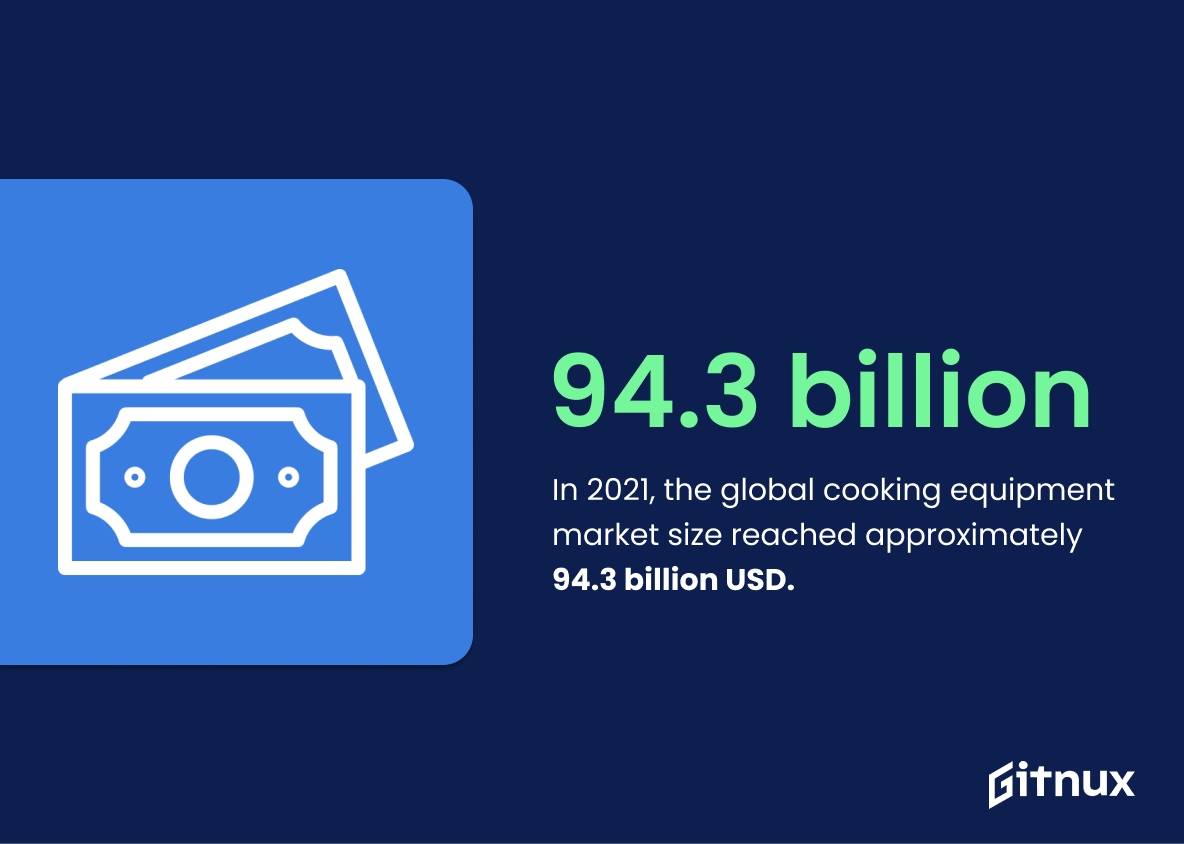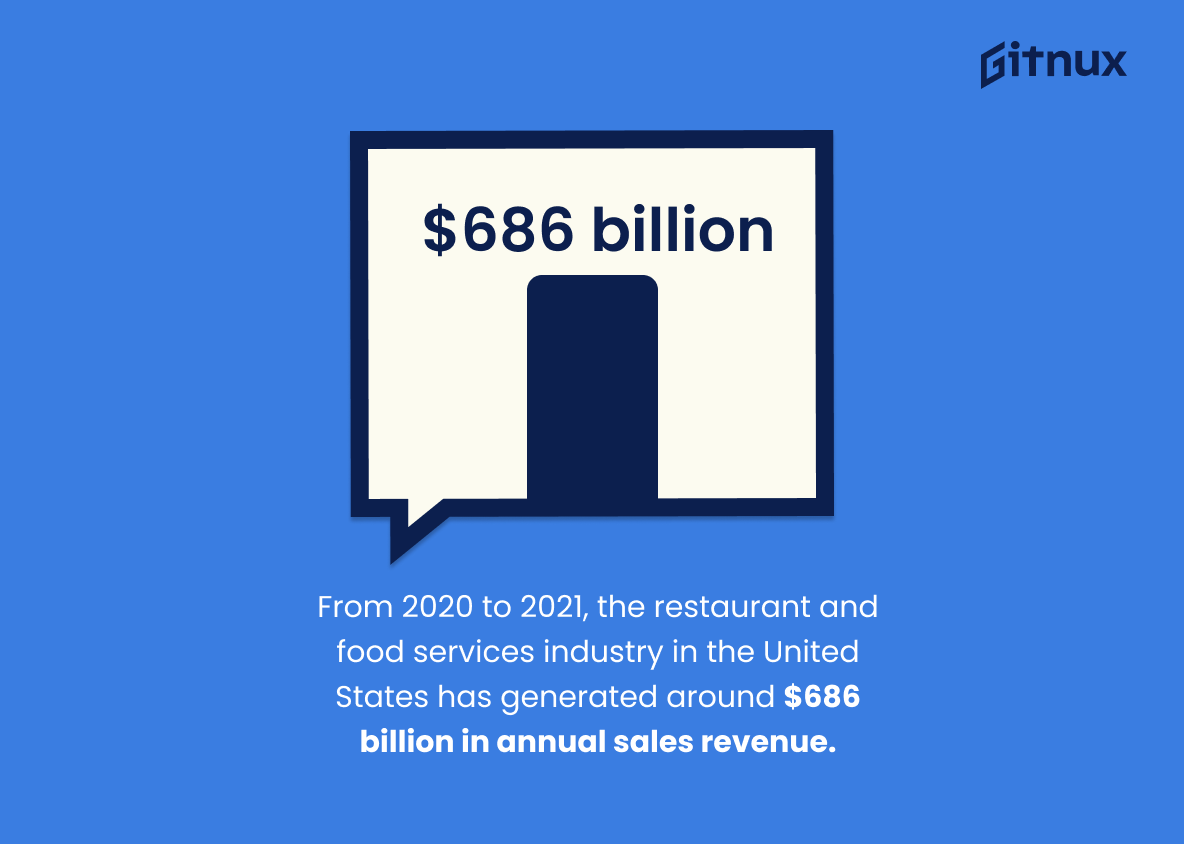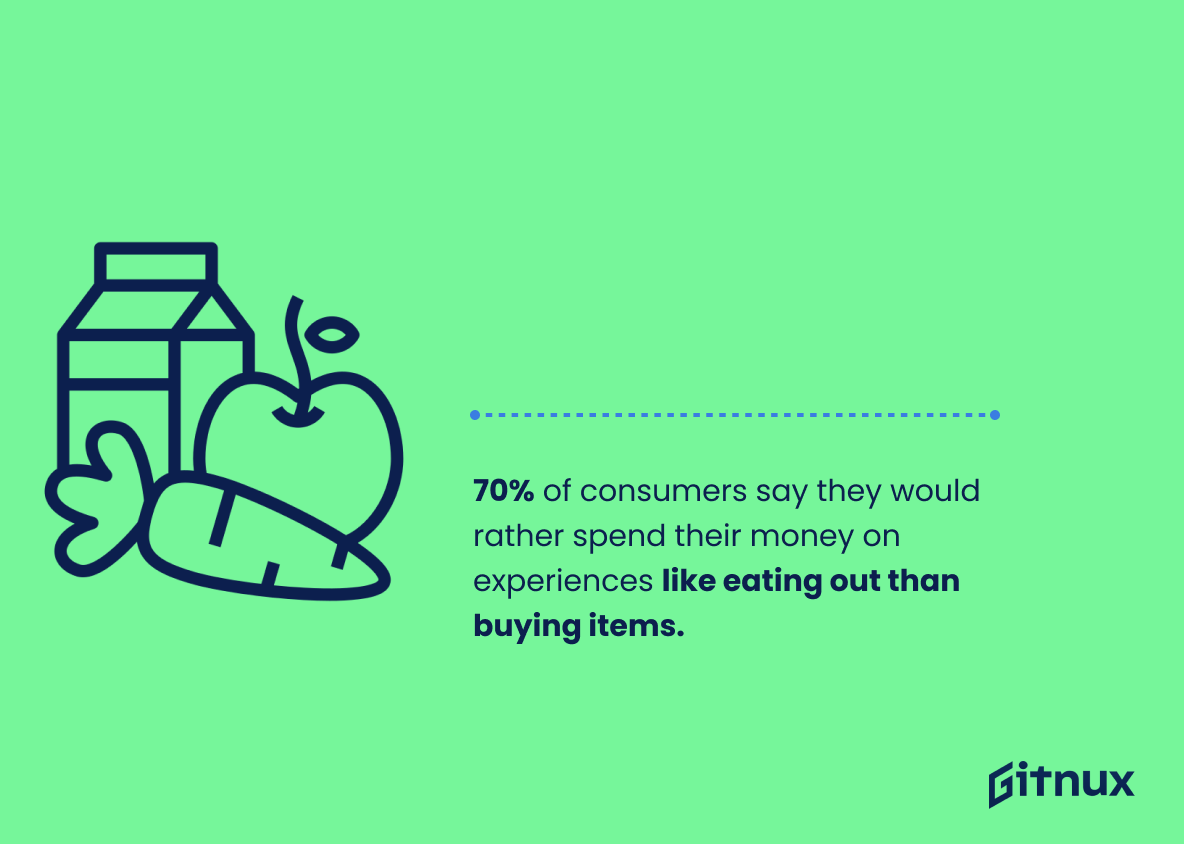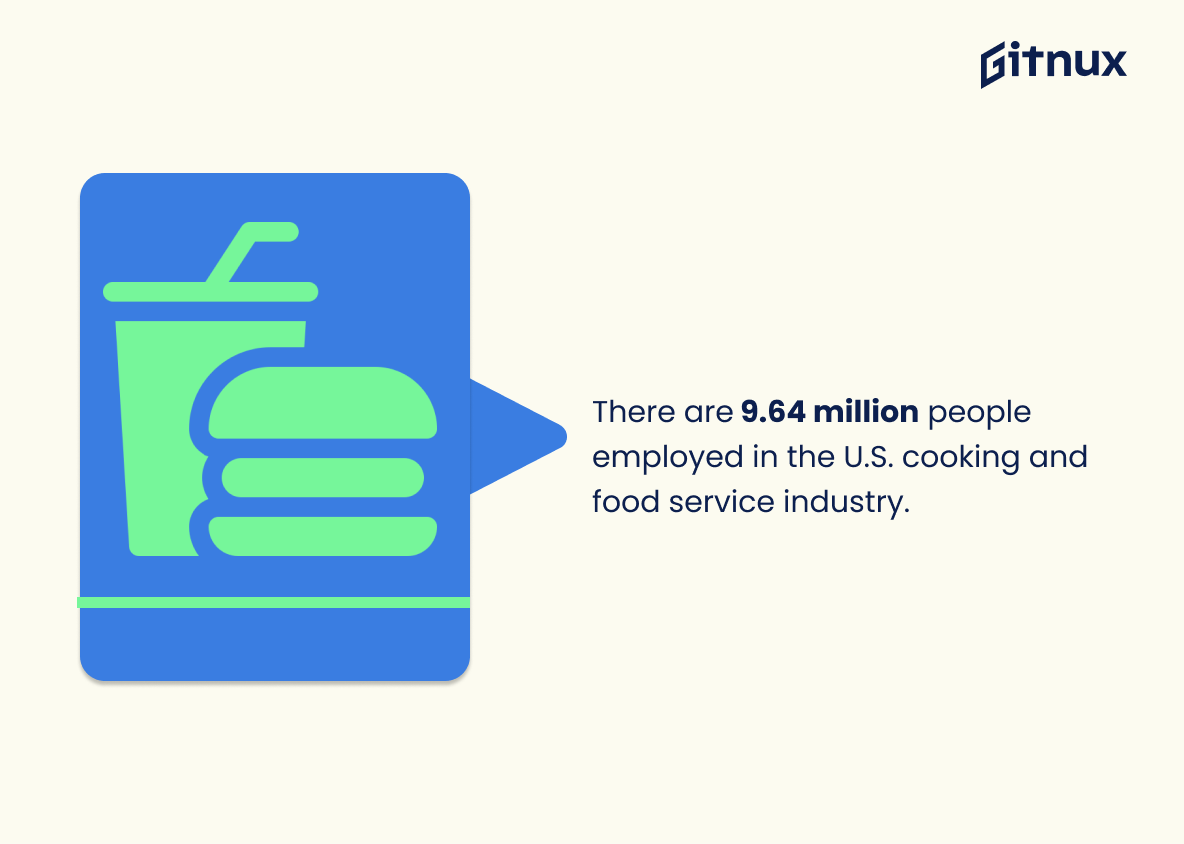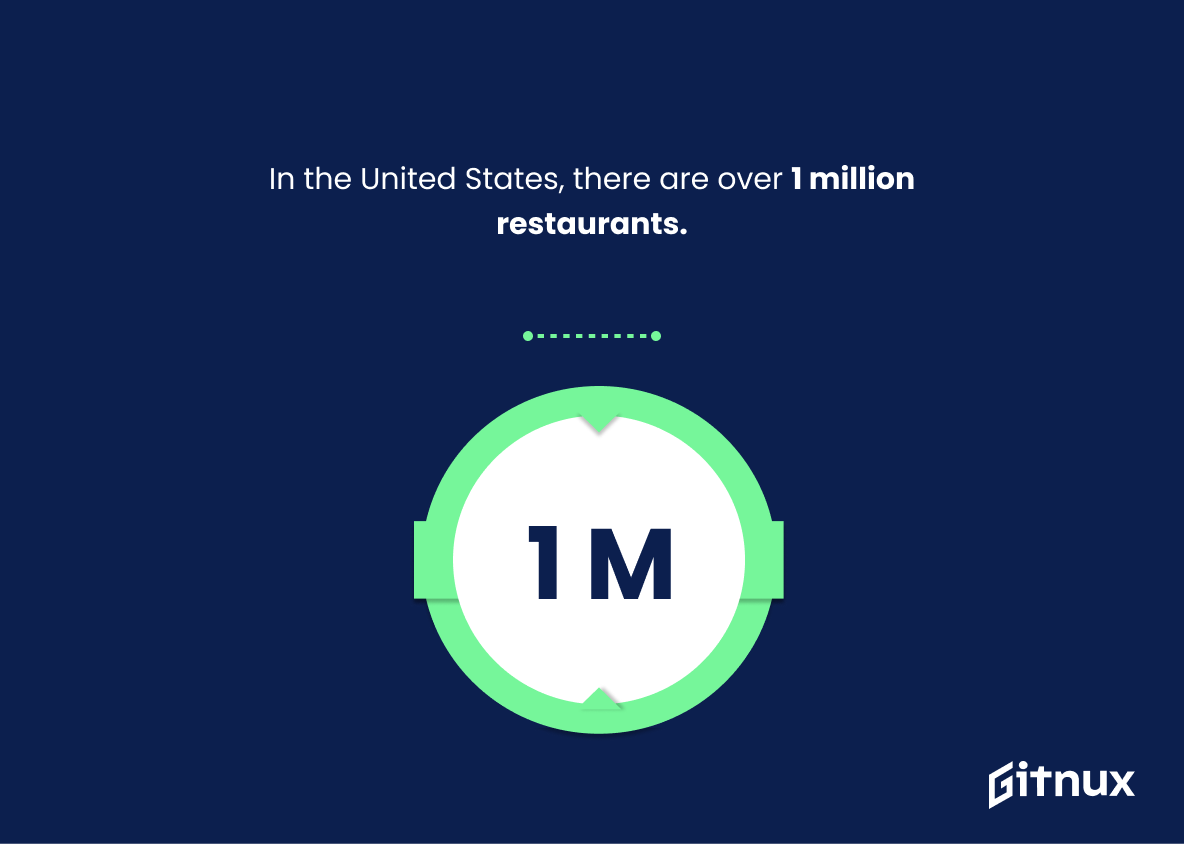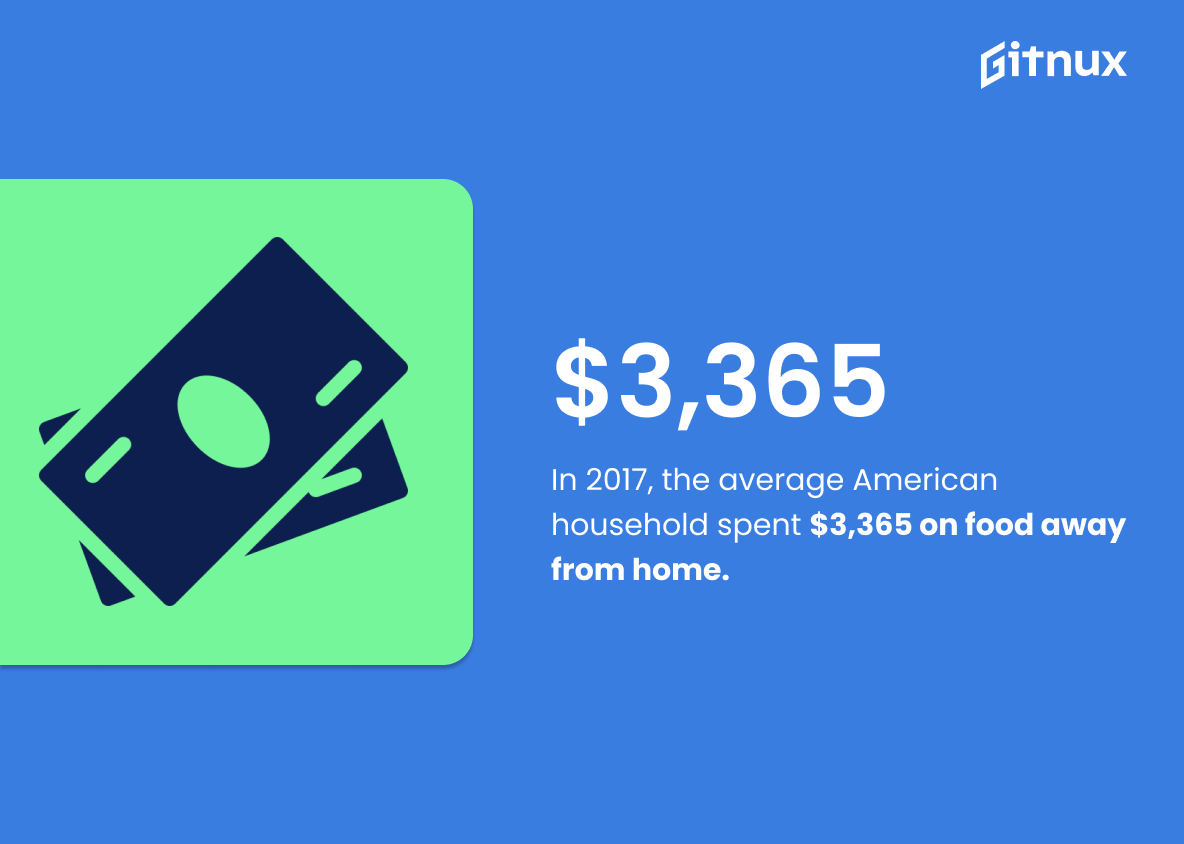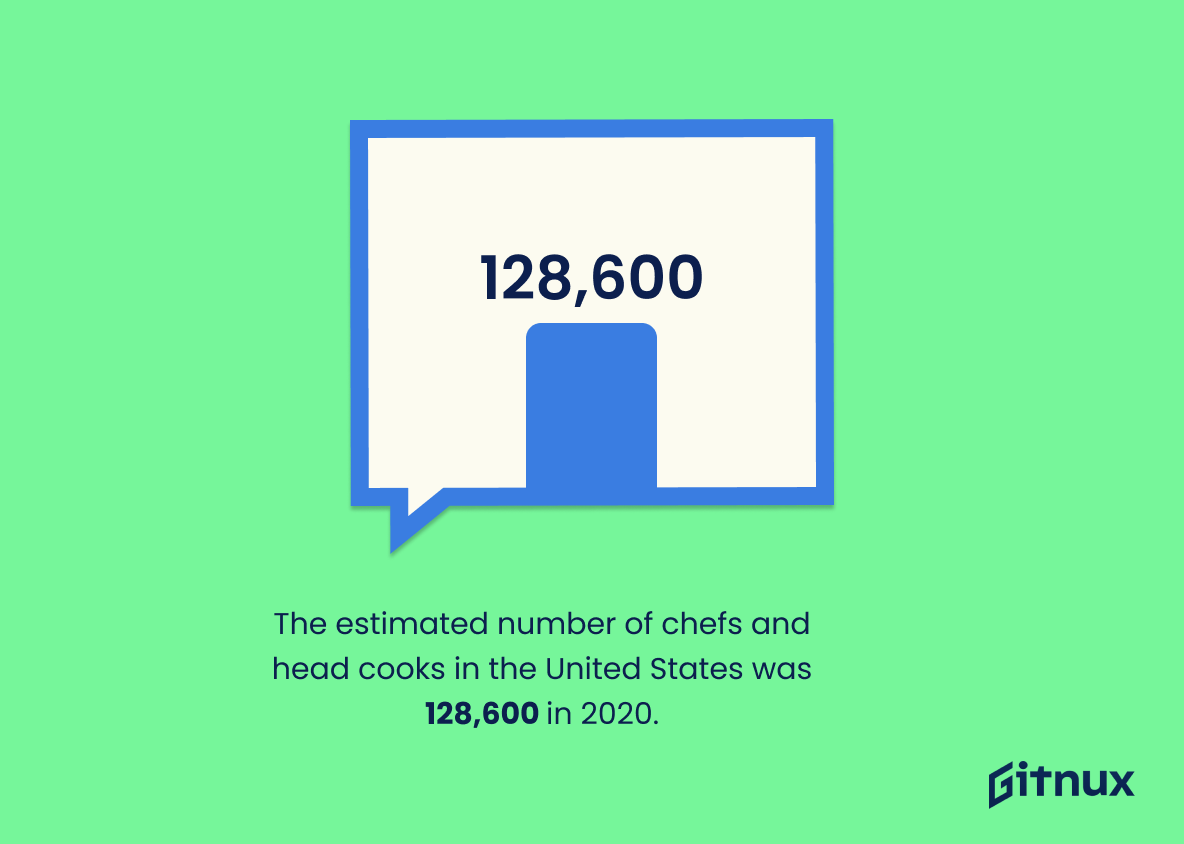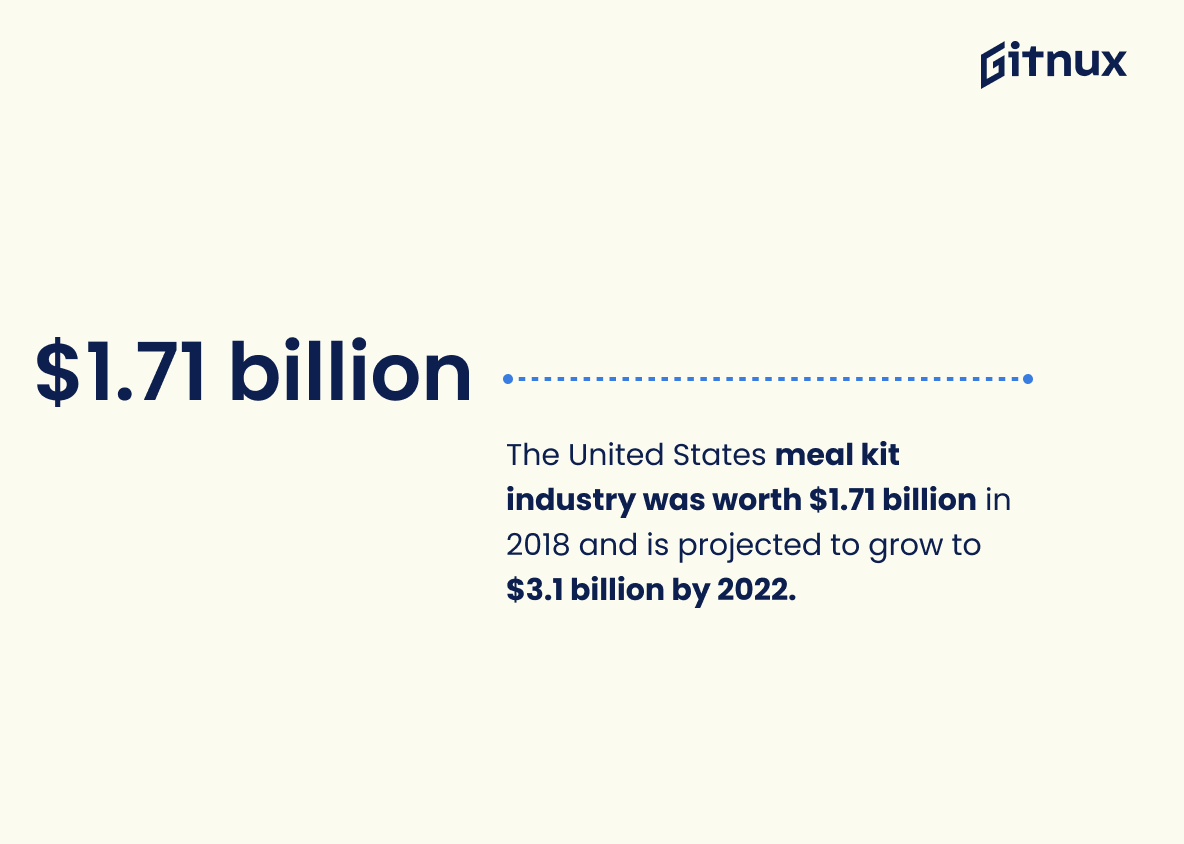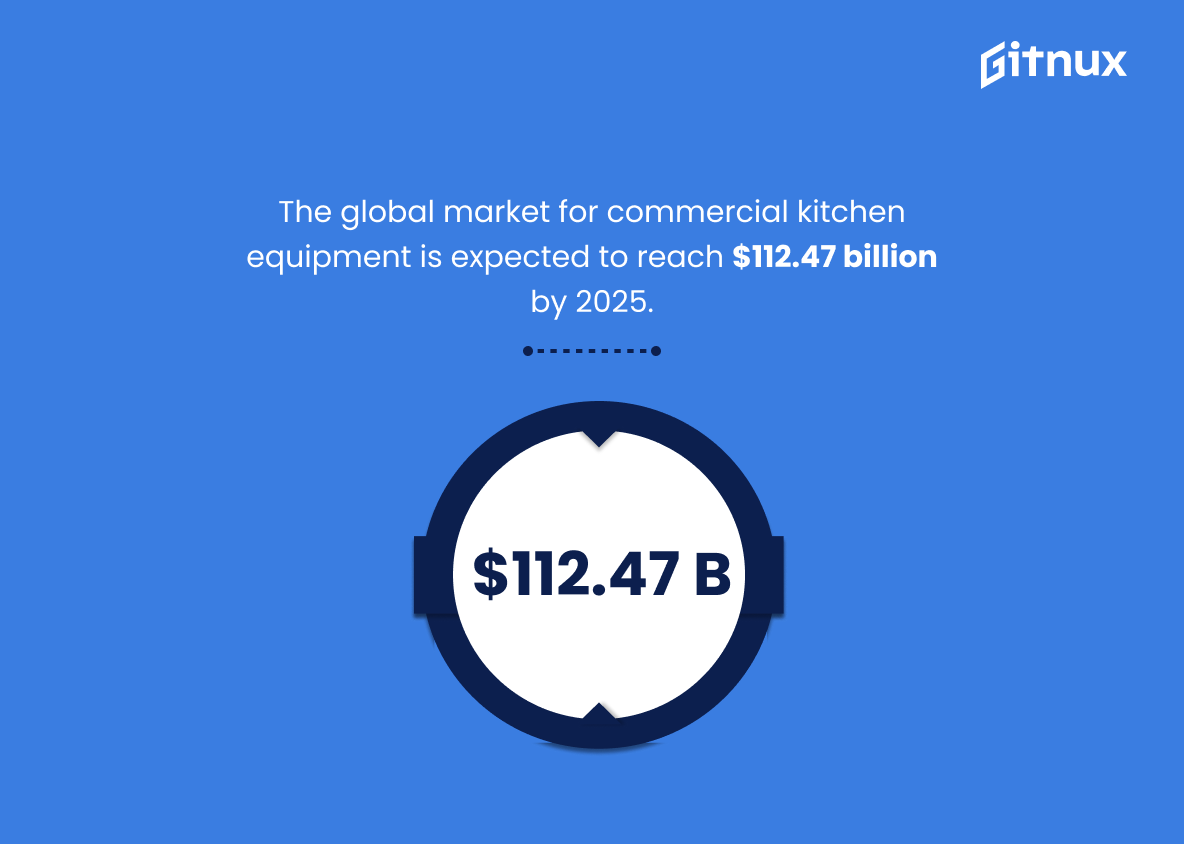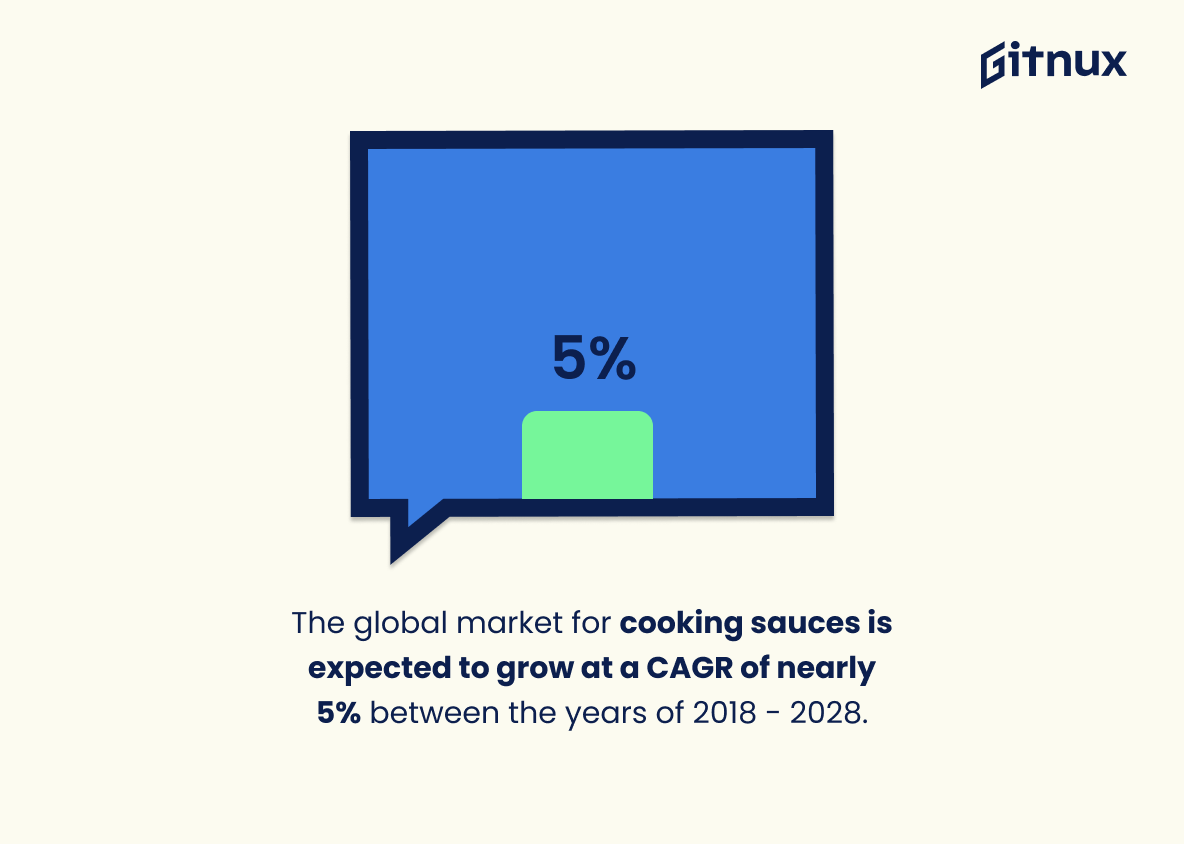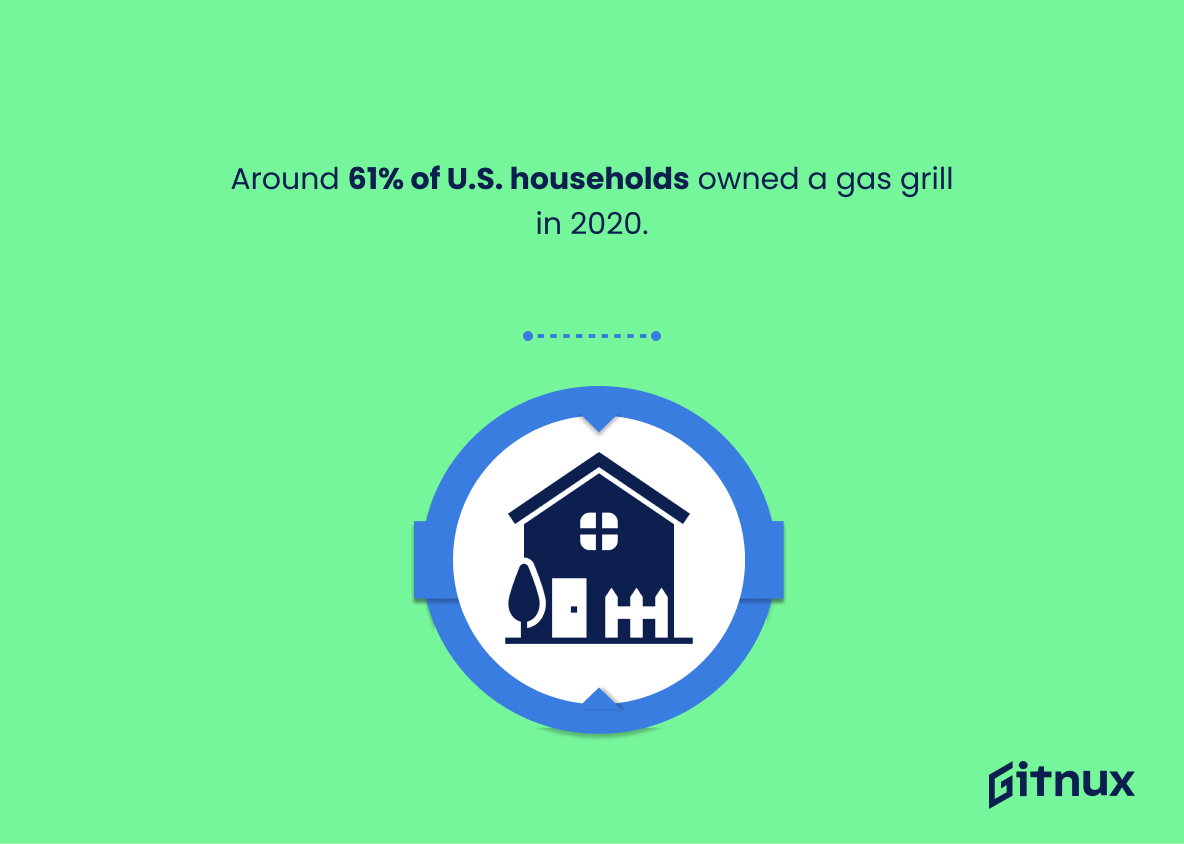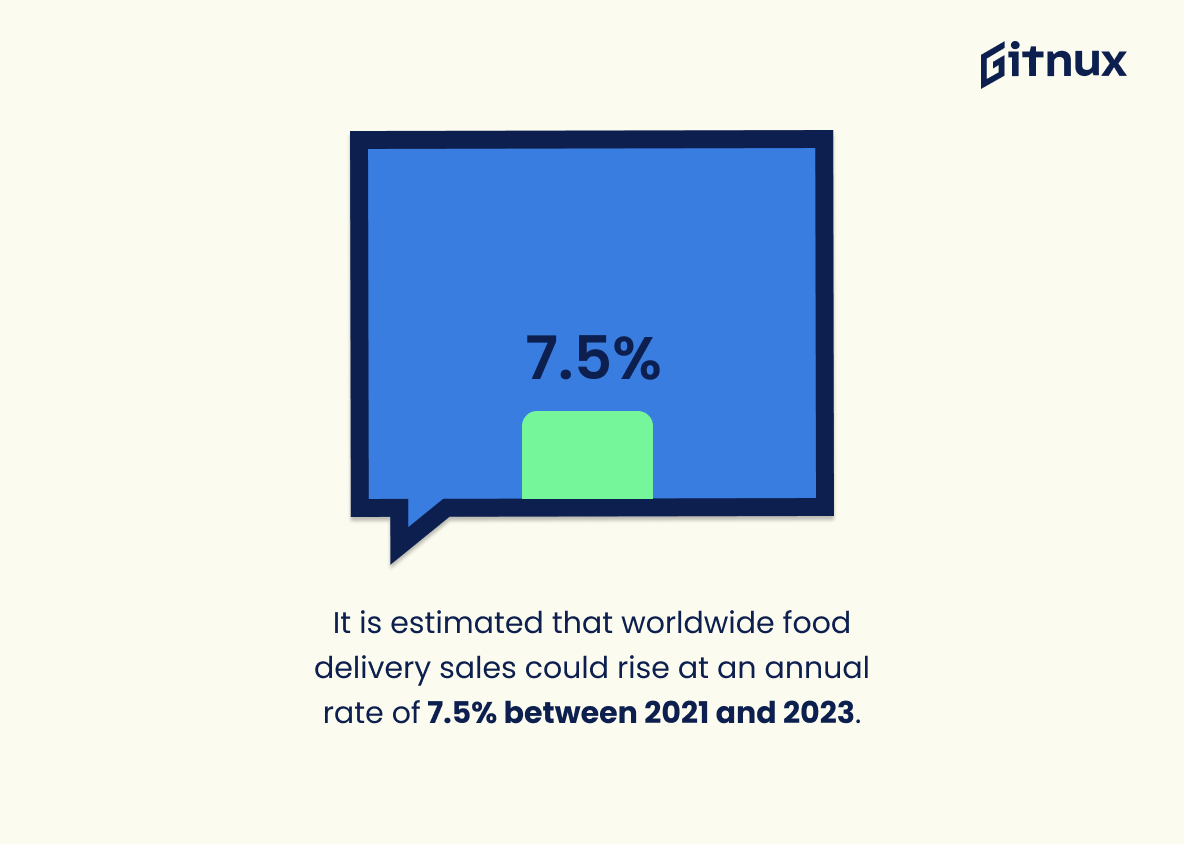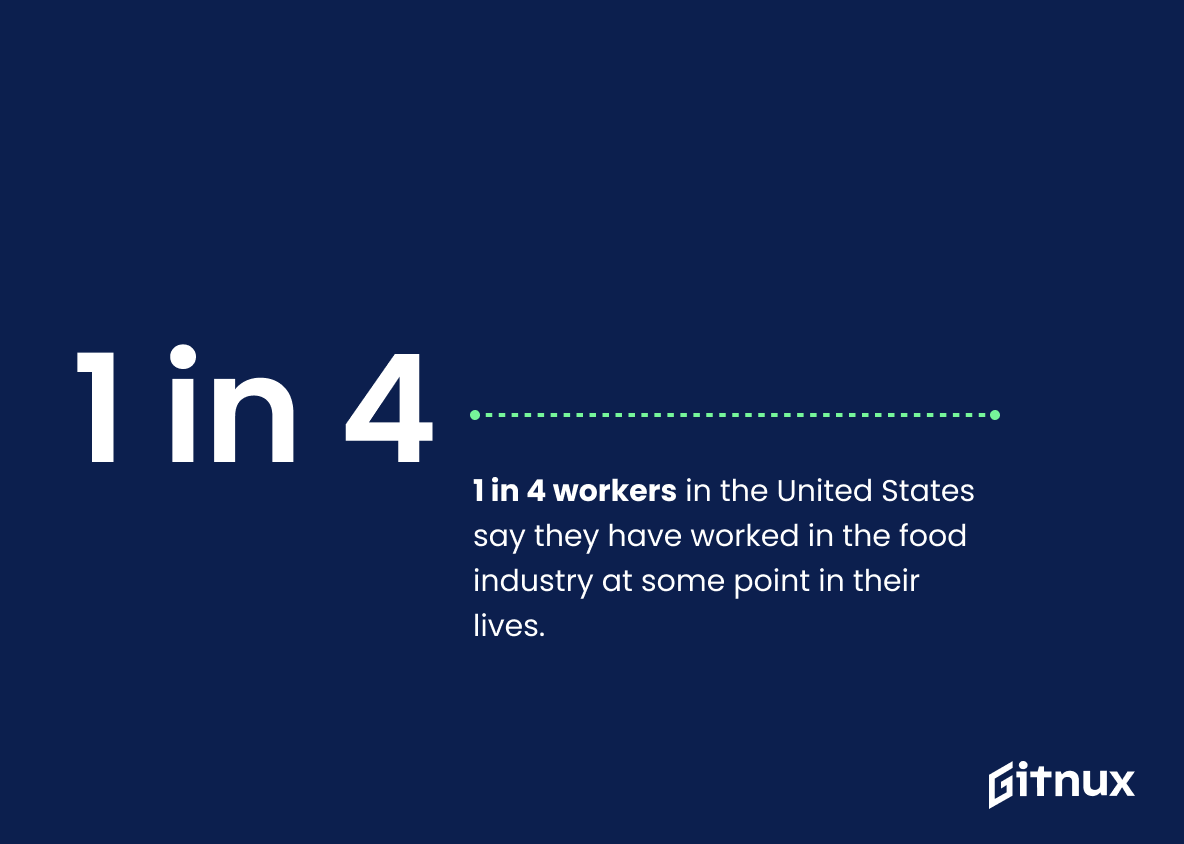The global cooking equipment market was valued at $94.3 billion in 2021, according to Statista. The US restaurant industry generated about $686 billion in sales from 2020 to 2021, says Restaurant.org. Many restaurant owners, about 80%, began in entry-level jobs, and there were 300,000 cooking apps in Q4 2020. EY’s survey reveals that 70% of consumers prefer experiences like dining out. The US food service industry employs 964 million people, and there are 1 million US restaurants. The average US household spent $3365 on food away from home in 2017, and there are 128,600 US chefs. The meal kit industry is projected to reach $3.1 billion by 2022 from $1.71 billion in 2018.
Commercial kitchen equipment will hit $112.47 billion globally by 2025, and online recipe use was recorded in 129.82 million households in 2018. The cooking sauce market anticipates a 5% CAGR from 2018-2028. The US held a 34% global share in consumer food service in 2019. Households dedicate 5.5% of costs to utilities like gas. Plant-based foods saw a 43% increase from 2018-2020. A 7.5% annual growth is expected in worldwide food delivery sales from 2021-2023, and a quarter of US workers have been in the food industry. Let’s examine the crucial statistics about the cooking industry more closely.
Cooking Industry Statistics Overview
70% of consumers say they would rather spend their money on experiences like eating out than buying items.
This statistic is a telling indication of the current trend in consumer spending, which is heavily focused on experiences rather than items. This has major implications for the cooking industry, as it suggests that people are more likely to invest in eating out than in cooking at home. This could be a great opportunity for restaurants and other food-related businesses to capitalize on this trend and increase their profits.
There are 9.64 million people employed in the U.S. cooking and food service industry.
This statistic is a testament to the sheer size and scope of the U.S. cooking and food service industry. It highlights the fact that this industry is a major contributor to the U.S. economy, employing millions of people and providing countless services to the public. It also serves as a reminder of the importance of the industry in providing jobs and livelihoods to so many people.
In the United States, there are over 1 million restaurants.
This statistic is a testament to the sheer size and scope of the cooking industry in the United States. It speaks to the immense popularity of dining out and the sheer number of establishments that have been established to meet the demand. It is a powerful reminder of the impact the cooking industry has had on the economy and culture of the United States.
In 2017, the average American household spent $3,365 on food away from home.
This statistic is a telling indication of the importance of the cooking industry in the lives of Americans. It shows that, on average, Americans are spending a significant amount of money on food away from home, which speaks to the prevalence of restaurants, take-out, and other food services in the country. This statistic is a valuable insight into the size and scope of the cooking industry in the United States.
The estimated number of chefs and head cooks in the United States was 128,600 in 2020.
This statistic is a valuable insight into the current state of the cooking industry in the United States. It provides a snapshot of the number of chefs and head cooks currently employed in the country, giving readers an idea of the size and scope of the industry. Additionally, it can be used to compare the current number of chefs and head cooks to previous years, allowing readers to track the growth or decline of the industry over time.
The United States meal kit industry was worth $1.71 billion in 2018 and is projected to grow to $3.1 billion by 2022.
This statistic is a testament to the booming success of the meal kit industry in the United States. It shows that the industry is growing rapidly and is expected to continue to do so in the coming years. This is an important indicator of the health of the cooking industry and provides insight into the current trends in the industry.
In the United States, it is projected that 8.1 million people will be employed in the restaurant industry by 2026.
This statistic is a testament to the growing importance of the restaurant industry in the United States. It shows that the industry is expanding and creating more jobs for people, which is a positive sign for the economy. Additionally, it indicates that the demand for restaurant services is increasing, which is a good sign for the cooking industry as a whole.
The global market for commercial kitchen equipment is expected to reach $112.47 billion by 2025.
This statistic is a testament to the immense potential of the cooking industry. It shows that the market for commercial kitchen equipment is expected to grow exponentially in the coming years, indicating that the industry is ripe for investment and expansion. This is an exciting prospect for anyone interested in the cooking industry, as it suggests that there are plenty of opportunities to be had.
In 2018, there were 129.82 million households worldwide that used online cooking recipes.
This statistic is a testament to the power of the internet in the cooking industry. It shows that the internet has become an invaluable resource for people looking to learn how to cook, with millions of households turning to online recipes for guidance. This statistic is a clear indication that the cooking industry is thriving, and that the internet is playing a major role in its success.
The global market for cooking sauces is expected to grow at a CAGR of nearly 5% between the years of 2018 – 2028.
This statistic is a clear indication that the cooking sauce industry is on the rise, with a projected growth rate of nearly 5% over the next decade. This is great news for those in the cooking industry, as it means that there is a growing demand for cooking sauces and a potential for increased profits. This statistic is also important for those looking to invest in the cooking industry, as it shows that the industry is likely to remain profitable in the years to come.
In 2019, the United States had the largest market share of global consumer foodservice with 34% of market value.
This statistic is a testament to the immense influence the United States has on the global cooking industry. It highlights the fact that the US is a major player in the consumer foodservice market, with a market share that is more than a third of the total market value. This statistic is a reminder of the importance of the US in the cooking industry and the potential for growth in the sector.
It is estimated that 5.5% of the total costs for restaurants are dedicated to utilities like electricity, water, and gas.
This statistic is an important indicator of the financial burden that restaurants must bear in order to keep their operations running. It highlights the need for restaurants to be mindful of their utility costs, as they can quickly add up and eat into their profits. This is especially pertinent in the context of a blog post about Cooking Industry Statistics, as it provides a valuable insight into the financial realities of running a restaurant.
Around 61% of U.S. households owned a gas grill in 2020.
This statistic is a telling indication of the popularity of gas grills in the United States. It shows that a majority of households have embraced this type of cooking appliance, which is a testament to the convenience and efficiency that gas grills offer. This statistic is an important piece of information for anyone interested in the cooking industry, as it provides insight into the current trends in the market.
It is estimated that worldwide food delivery sales could rise at an annual rate of 7.5% between 2021 and 2023.
This statistic is a clear indication that the cooking industry is on the rise, with food delivery sales projected to increase at a steady rate over the next few years. This is great news for those in the cooking industry, as it suggests that there is a growing demand for their services. Furthermore, this statistic could be used to inform decisions about investments in the cooking industry, as well as to help plan for future growth.
1 in 4 workers in the United States say they have worked in the food industry at some point in their lives.
This statistic is a telling indication of the prevalence of the food industry in the United States. It shows that a large portion of the workforce has had some experience in the food industry, whether it be in a restaurant, grocery store, or other food-related business. This statistic is important to consider when discussing the size and scope of the cooking industry, as it demonstrates the significant impact it has on the American workforce.
Conclusion
The cooking industry is a thriving and ever-evolving sector that has seen tremendous growth in recent years. From the global market size of 94.3 billion USD to the estimated 9.64 million people employed in the U.S., it’s clear that this industry plays an important role in our economy and culture today. The rise of digital technologies, such as mobile apps for ordering food or meal kits, have also made it easier than ever before for consumers to access delicious meals from their favorite restaurants or chefs at home with just a few clicks on their phones or computers.
Additionally, plant-based foods are becoming increasingly popular among health – conscious eaters who want more sustainable options when dining out or preparing meals at home – further demonstrating how diverse and dynamic this field can be. With all these factors taken into consideration, there’s no doubt that the cooking industry will continue to grow over time as new trends emerge and consumer preferences evolve accordingly
References
0. – https://www.www.energycentral.com
1. – https://www.www.grandviewresearch.com
2. – https://www.www.statista.com
3. – https://www.www.bls.gov
4. – https://www.www.ey.com
5. – https://www.www.euromonitor.com
6. – https://www.www.futuremarketinsights.com
7. – https://www.restaurant.org
8. – https://www.www.restaurant.org
